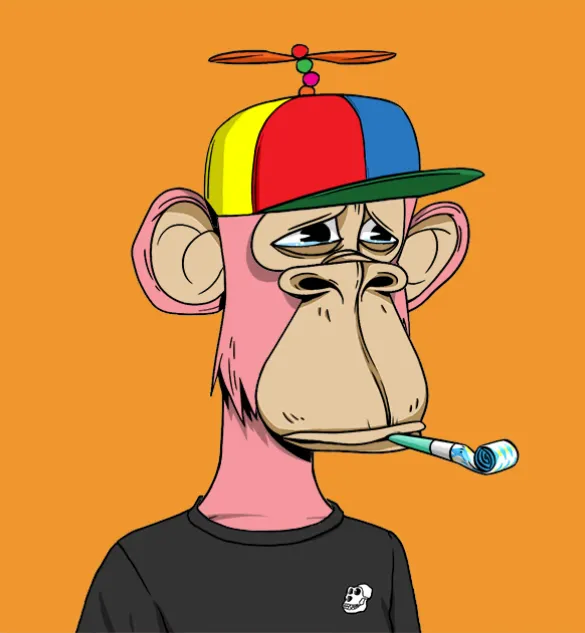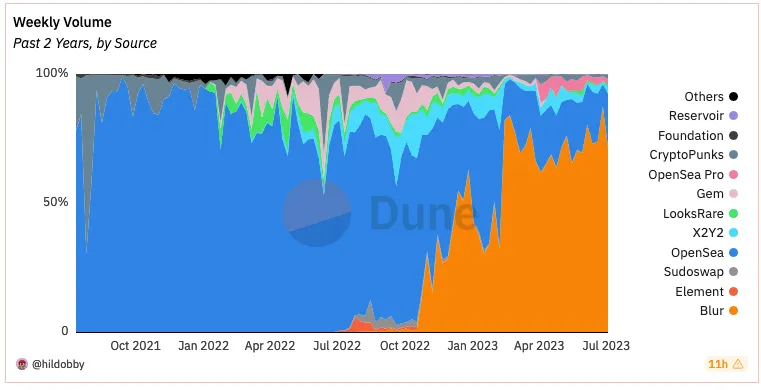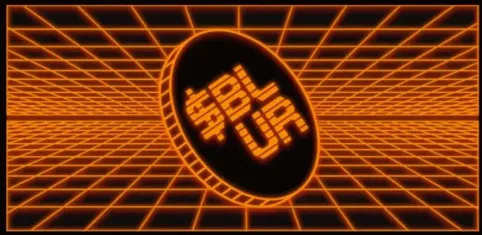Original Author: TylerD
Original Translation: Deep Tide TechFlow
In 2021, everything was so simple. People would really buy NFTs, buy the artworks they liked, and buy NFTs with rare features.
We joined Discord groups to connect with other owners. Communities formed, communication increased, and the number of holders grew. Then, finance began to permeate this mature market, and things started to change.
Many considered the financialization of NFTs as a sign of market maturity. Some believed it would open the doors to larger and more mainstream participants.
But is that really the case?
At least for one important area of the NFT market - the PFP (Profile Picture) field - it seems that financialization has disrupted the NFT we once knew. In this article, TylerD shares his observations on the financialization of NFTs, including market and trading innovations, token incentives, lending, and NFT perpetual contracts/futures, and their impact on the market.

Advanced Trading Features
Overall Impact: Negative
In the early stages of the cycle (i.e., late 2020 to early 2021), the NFT market was like an unruly Wild West, and OpenSea was the king.
Just as its name suggests, it was a vast ocean of open JEPGs. It could be said that it was the biggest winner in the 2021 bull market cycle, earning millions of dollars from billions of dollars in monthly revenue.
Its success brought competition, first from LooksRare, then X2Y2, Gem and Sudoswap, and finally Blur.

This competition gave rise to new features in the NFT market, enhancing the trading experience. There are too many features to list, but some influential ones include:
Analytical charts and better data access;
Batch buying and listing of NFTs;
Bulk selling of NFTs through accepting bids;
Real-time bidding and bid depth analysis.
At the time, these features were welcomed and are still popular now. But they were the first to change the way NFT traders and collectors view their JPEG images.
Once unique digital collectibles with features and functionalities, holders formed connections and valued the items they held. Now, their non-fungibility is disappearing, and tokens are becoming homogenized.
Batch purchasing can be said to be the first feature that led NFTs down this path. Bulk purchasing of NFTs has changed the shopping experience and the ability to sell in bulk through bidding has changed the selling experience.
Although floor sweeping often receives cheers in NFT Discord groups, more savvy holders quickly realized the problem - most sweepers are more likely to become sellers, and so on. They don't care about which NFTs they own, they're just tokens that can be bought and sold.
Therefore, although these features improve the trading experience, the experience of collecting and holding underlying assets is deteriorating. The impact of these trading features is negative, even if it was not fully realized at the time.
But compared to the impact of the next stage of market competition: token incentives, the impact of advanced trading features seems weak and ineffective.
Token Incentives
Overall Impact: Negative
By the end of 2022, most PFP projects had died out. The surviving projects seemed to have hope for success.
The new generation of projects was led by Bored Ape Yacht Club (BAYC), followed by Azuki, Doodles, Moonbirds, and Clone X, each project seeming to have its own unique and powerful community.
However, in February 2023, everything changed. Blur announced an airdrop and the second season of mining. Early users received $BLUR tokens through the airdrop, injecting over $275 million in liquidity into the market.

With these incentives, liquidity flowed back into the PFP market, and prices rose for several weeks in a row. An additional commitment of around $300 million in airdrops attracted new (seemingly DeFi-native) traders into the field.
Miners can earn points by listing and bidding on NFTs. And smart people naturally find ways to manipulate the system. These speculators buy NFTs without earning rewards, and once their bids are accepted, they do not accumulate points. As a result, the game becomes about keeping the bid high but not getting accepted.
This reveals a fact that these farmers don't actually want these NFTs, they just want to accumulate points for the $BLUR token.
This issue became more apparent on the BAYC market after some well-known traders/founders/OSFs and Mando conducted Bored Ape transactions. They sold 71 BAYC for a whopping 5,545 ETH (worth $9 million at the time) in a matter of seconds.
And the speculators participating in the Blur bidding just ended up with 71 BAYC NFTs they didn't want, triggering a chain reaction. A group of people started trading these NFTs with each other to earn points.
So, people witnessed these two things:
The same NFT being traded multiple times;
Prices starting to decline.
Speculators have calculated the acceptable loss per transaction as long as they offset enough Blur points with points. Starting from February 2023, this situation led to a gradual decline in asset prices, which has continued until now.
It can be argued why new buyers haven't entered these ecosystems. Many people point out the shortcomings of the team and founders in execution and vision. It does make some sense.
But another driving factor - and perhaps a more important one - is that these NFTs (especially PFPs) have lost their sense of mystery. It's not so desirable to buy a Bored Ape that has been traded multiple times.
Famous NFT trader Cirrus made an analogy, he said walking into a Rolex store and seeing a few luxury collectors throwing Rolex watches at each other all morning. Would you want to buy those Rolexes?
As this process goes on, the characteristics that initially attracted many people to the PFP market (identification with features, buying an NFT worth using as a profile picture, and entering the community) gradually fade away.
These PFPs have become tokens used for trading to accumulate $BLUR tokens. Their non-fungibility is further diminished, which is why I believe token incentives have a negative impact on the market.
NFT Lending
Overall Impact: Positive
In the midst of the ongoing market battle, a new financial sector is taking off: NFT lending.
In April of this year, the total transaction volume of the NFT lending market surpassed $1 billion, and recently surpassed the $2 billion mark in June after Blur launched its Blend platform.
NFTfi was the first platform to enter the market, launching in the spring of 2021 and reaching a trading volume of about $400 million by the end of 2021.
The product is fairly simple. NFT holders use their assets as collateral and set the desired loan conditions, while borrowers make offers on these NFTs. If the NFT holder accepts the conditions, they will proceed with the transaction and receive WETH, while the NFT will be held in custody. If the loan is repaid on time, the holder will regain ownership of the NFT; otherwise, the borrower will receive the NFT.
Subsequently, other competitors entered the market, including Arcade.xyz and other peer-to-peer lending protocols, as well as BendDAO and JPEG'd among other pool protocols. Loan terms became longer, and interest rates decreased.
Soon, NFT holders had several options, with new participants like BendDAO promoting loans without repayment dates, as long as the asset value remains above a certain liquidation threshold.
Then, in May 2023, Blur introduced its Blend program, incorporating lending and a Buy Now, Pay Later option market into its protocol and offering token incentives for loan quotes.
The loan-to-value ratio (LTV) increased, and the annual interest rate dropped to 0. More leverage entered the ecosystem, which became increasingly evident in the recent Azuki Vegas party, Elementals disaster, and subsequent PFP liquidation chain reaction.
Although some may see potential negative impacts of NFT lending, as leverage trading often ends in disaster (especially for inexperienced and overexposed traders), for me, this functionality is more positive.
Being able to obtain liquidity using NFTs as collateral makes it easier to hold onto the NFT for a longer period of time.
Furthermore, protocols like NFTfi, Arcade, and even Zharta allow for specific quotes on specific NFTs, adding value to characteristics, scarcity, and more throughout the lending process.
The heterogeneity is actually rewarding, so I think NFT lending is a positive assessment.
NFT perpetual contracts, options, and futures
Overall impact: Negative
It can be said that one of the hottest financial trends in the NFT bear market is to go long or short on NFTs through perpetual contract protocols (such as NFTperp and Tribe) and Wasabi (peer-to-peer).
Perpetual contracts and futures allow traders to bet on the future price of assets, often using leverage. For example, NFTperp allows users to use up to 10x leverage in their trades (meaning a 1 ETH bet is equivalent to a 10 ETH position). The difference between perpetual contracts and futures is that perpetual contracts can remain open indefinitely, while futures have set expiration dates.
Here's a brief introduction to how these protocols work: Perpetual contract protocols use virtual automated market makers (vAMMs) that allow traders to bet on NFTs going long (expecting prices to rise) or going short (expecting prices to fall). As described by renowned cryptocurrency KOL 0x Foobar, vAMMs operate similarly to Uniswap v2 pools but without actual liquidity. They simulate liquidity through algorithms and adjust prices based on the volume of long and short trades.
This product allows holders to hedge the value decline of their NFTs by opening short positions, enables those who don't have enough funds to purchase NFTs (e.g., 35 ETH for BAYC) to bet on their rise through long positions of any amount, and also allows those who believe that a particular NFT will decline to bet on this trend through shorting.
All three use cases are meaningful and have a place in traders' comprehensive trading strategies. However, these trades and underlying models have limitations and may be tested in extreme market events, as NFTperp recently discovered the hard way.
Recently, NFTperp unexpectedly shut down its platform, citing accumulated losses of $518 million in futures trading. They have shared some details of what happened, but it is likely that the significant drop in the NFT market caused by Azuki Elementals minting and subsequent liquidation added to NFTperp's short trading volume, resulting in an unsustainable impact on the system.
This move has made Wasabi and Tribe the only remaining shorting protocols in the market.
In general, NFT perpetual contracts, options, and futures are the newest and most immature NFT financial markets. Some believe that NFT perpetual contracts are doomed to fail from a design standpoint (this viewpoint is worth discussing separately).
But one thing is clear - of all the financial aspects discussed so far, perpetual contracts and futures may have the most negative impact on maintaining non-fungibility.
At first glance, the only thing that matters is the floor price (more accurately, the vAMM oracle price). The entire community and collection are reduced to numbers on a screen. Rare items are not important. All bets are tied to fluctuations in the floor price.
Therefore, I have a negative overall assessment of NFT perpetual contracts, options, and futures.
Conclusion
The points outlined here mainly focus on the NFT PFP field because Art Blocks, the broader digital art market, and other NFT fields such as games and metaverses, are largely unaffected by token incentives and benefits.
Interestingly, the Art Blocks index has slightly risen over the past year, while the PFP (Profile Picture) index has dropped by over 50%.
Perhaps the most disruptive evidence is the CryptoPunks market, which maintained a stable 10% range for 200 days before being added to the Blur incentive bidding. It then experienced extreme fluctuations for 120 days, with changes ranging from +15% to -40%.
In summary, evaluating the impact of NFT financialization on the PFP field:
Advanced trading features - Negative;
Token incentives - Negative;
Lending - Positive;
Futures, perpetual contracts, and options - Negative.
As the non-fungible token market develops, we are starting to see various features and mechanisms affecting this new market. Many of these financial innovations have eroded the non-fungibility of NFTs.
This removal of heterogeneity has had a negative impact on the desire of collectors to hold these assets and has been reflected in the market. Sadly, the damage caused to this market may be irreversible, with the possible outcome that existing PFP collectibles will never see ATH again.
Perhaps our early NFT market didn't need so much financialization, and perhaps new innovations will reignite heterogeneity.





